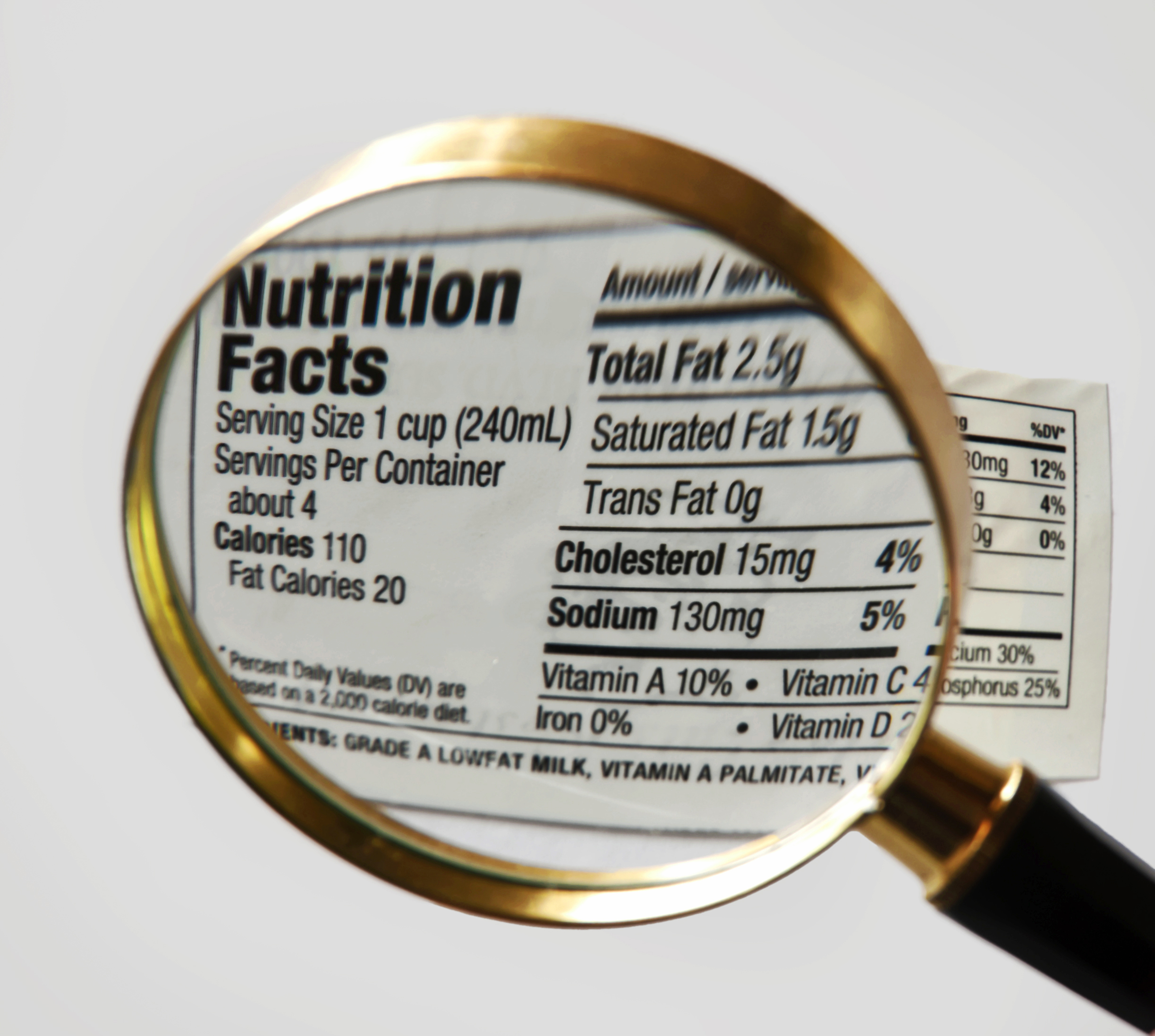Misjudging Healthy Habits
The intention of food labels to inform consumers about the products sold to them often misleads and distorts how they’re used.
Many people who are health conscious take the time to look into what’s going into their bodies, which may leave some assured they’re making the right decisions with the food choices they’re making while grocery shopping.
Food manufacturers like to put appealing terms on their labels to draw new consumers, which does not always get on the radar of the regulatory commissions, like the FDA.
These are generic terms like ‘natural’, ‘whole grain’, ‘fat free’, or ‘trans-fat free’.
Consumers also use the labels to gauge the caloric content of their foods, when in reality the accurate calories printed are underestimated anywhere from 8-16%.
The FDA knows the population is hyper-focused on calories these days, which is why the new food labels for 2020 have calories and serving sizes in bold print.
Calories have an importance in nutrition but it’s only one aspect of the many factors of health, which most of these labels fail to disclose.
The Deception Behind Nutrition Labels
Packaged food products have nutrition facts printed that are broken down into 4 sections: serving information, calories, nutrients, and percentage of daily value.
Serving information will contain how many servings are in a package and the amount that is equivalent to a single serving. The information printed below the serving section indicates what contained in that serving.
While most people assume that the servings are displayed as a guideline for the recommended amounts, they’re actually based on the amount of food people typically consume.
This means if you’re living in a country with higher rates of obesity, you’re eating in accordance to standards of that population and not what’s recommended for your body. This relates sugary drinks especially, as the single serving sizes for soda increased from 8 to 12 oz in recent years.
Some food and drink products look like one serving but they actually contain multiple servings. The serving sizes are smaller than what most individuals consume in one sitting, as displayed on foods not individually packaged like chips or other snack items.
Nutrients are vital for digestion and to prevent malnutrition, which is why labels display this information for the consumers (see Nutrition Recommended Daily Amounts). The new 2020 labels now show the vitamins that are deficient within the population and has removed the ones that are commonplace in most diets.
Unbeknownst to many, these vitamins are synthetically produced in laboratories and fortified back into the food to extend the shelf life of the products being sold. This means the vitamins found in these foods are of lower quality than the whole foods found in the produce and meat sections of the grocery stores.
The other nutrients that’s are hidden from the public are the unsaturated fats, better known as trans fats. Trans fats have been identified as a toxic product because of their correlation with chronic heart disease, which is why they were banned in foods in 2018.
However if these fats are under 0.5g per serving they’re allowed to be displayed on the label as 0g trans fats. If you’re consuming foods with hydrogenated vegetable oils (soybean, canola, cottonseed, rapeseed, etc.) on the ingredients list, there’s definitely trans fats present within that product.
The last section of the nutrients label is the daily value, which tells you how much a nutrient in a serving of food contributes to a diet of 2,000 calories. A 5% daily value is considered low while 20% or more is considered high.
Protein is important for calculating macronutrients needed to preserve lean muscle tissue for individuals dieting in a caloric deficit, yet this is the only nutrient that does not have a daily value assigned to it.
Solutions to Labels
The majority of your foods in your diet should consist of whole foods, since nutrients and fiber that stimulate satiety come from these sources.
Nutritional labels have to be regarded with caution as deceptive marketing practices and displayed information will have the tendency to confuse more than help many people.
The labels serve as a good guideline to observe the ingredients listed and to make decisions on what products you want to prepare your food with. If the ingredients has chemicals you can’t recognize/pronounce or is longer than five items, you should probably avoid it altogether and find an alternative.
If the product is claiming ‘natural’ or ‘healthy’, recognize this as a cue to grab your attention and nothing more. These products can have these labels but still contain pesticides, GMO ingredients, high sugar, and artificial ingredients or preservatives.
Healthy food doesn’t need to be labeled as such to improve your health or supplement any kind of deficiency.
The Wrap Up
The public’s reliance on food labels have done little to improve decision making regarding their health because of misleading information. The recent changes to the nutrition label can bring attention to a category that the population is well aware of, however this does little to improve their health if they fail to bring full disclosure about the foods we’re consuming. Use the labels with discernment to make wise product choices while supplementing your diet with quality whole foods.



Leave a Reply
You must be logged in to post a comment.